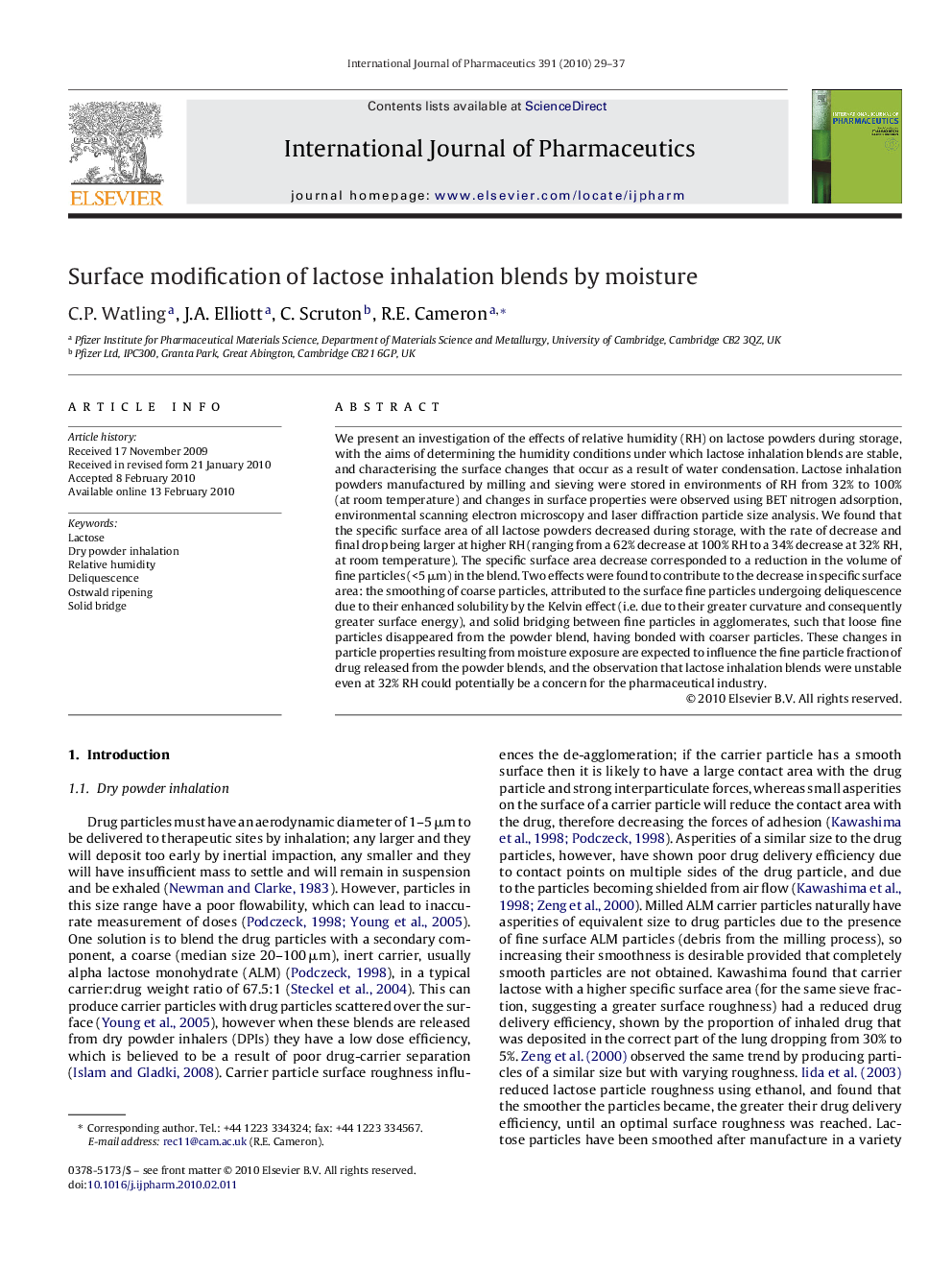| Article ID | Journal | Published Year | Pages | File Type |
|---|---|---|---|---|
| 2504093 | International Journal of Pharmaceutics | 2010 | 9 Pages |
We present an investigation of the effects of relative humidity (RH) on lactose powders during storage, with the aims of determining the humidity conditions under which lactose inhalation blends are stable, and characterising the surface changes that occur as a result of water condensation. Lactose inhalation powders manufactured by milling and sieving were stored in environments of RH from 32% to 100% (at room temperature) and changes in surface properties were observed using BET nitrogen adsorption, environmental scanning electron microscopy and laser diffraction particle size analysis. We found that the specific surface area of all lactose powders decreased during storage, with the rate of decrease and final drop being larger at higher RH (ranging from a 62% decrease at 100% RH to a 34% decrease at 32% RH, at room temperature). The specific surface area decrease corresponded to a reduction in the volume of fine particles (<5 μm) in the blend. Two effects were found to contribute to the decrease in specific surface area: the smoothing of coarse particles, attributed to the surface fine particles undergoing deliquescence due to their enhanced solubility by the Kelvin effect (i.e. due to their greater curvature and consequently greater surface energy), and solid bridging between fine particles in agglomerates, such that loose fine particles disappeared from the powder blend, having bonded with coarser particles. These changes in particle properties resulting from moisture exposure are expected to influence the fine particle fraction of drug released from the powder blends, and the observation that lactose inhalation blends were unstable even at 32% RH could potentially be a concern for the pharmaceutical industry.
